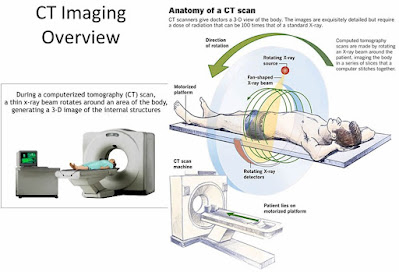Carcinoid tumors are type of slow-growing cancer that can arise in several places throughout the body. Carcinoid tumor which is one subset of tumors called neuroendocrine tumors, usually begin in digestive tract(stomach, appendix, small intestine, colon, rectum) or in the lungs.
Carcinoid tumors often don't cause signs and symptoms till late in disease. Carcinoid tumor can produce and release hormones into your body that cause signs and symptoms such as diarrhea and skin flushing. Treatment for carcinoid tumor usually include surgery and may include medications.(For all types of Cancer click here).
Symptoms:
Some carcinoid tumors don't cause any signs or symptoms. When they do occur, signs and symptoms are usually vague and depend on the location of tumor in body.
Carcinoid tumors in lungs:
Signs and symptoms of carcinoid tumors n lungs include:
- Chest pain
- Diarrhea
- Shortness of breath
- Wheezing
- Redness or feeling of warmth in your face and neck(skin flushing)
- Weight gain, particularly around mid section and upper back
- Pin or purple marks on the skin that look like stretch marks.
Carcinoid tumors in digestive tract:
Signs and symptoms of carcinoid tumors in digestive tract includes:
- Abdominal pain
- Diarrhea
- Rectal bleeding
- Rectal pain
- Nausea, vomiting and inability to pass stool due to intestinal blockage(bowel obstruction)
- Redness or feeling warmth in your face and skin(skin flushing)
Causes:
The causes of carcinoid tumors are not much clear. In general, cancer occurs when a cell develop mutation in its DNA. The mutation allow the cell to continue growing and dividing when healthy cells would normally die. The accumulating cells form a tumor. cancer cells can invade nearby healthy tissues and spread to other parts of body.
Doctors don't know what causes the cell mutation that can lead to carcinoid tumors. But, they know that carcinoid tumors develop n neuroendocrine cells.
Neuroendocrine cells are found in various organs throughout the body. They perform some nerve cell function and some hormone producing endocrine cell functions. Some hormones that are produced by neuroendocrine cells are histamine, insulin and serotonin.
Risk factors:
Factors that increase the risk of carcinoid tumor include:
- Older age: Older adults are more likely to be diagnosed with carcinoid tumor than are young people or children.
- Sex: Women are more likely to get suffer from carcinoid tumor then men.
- Family history: A family history of multiple endocrine neoplais, type 1 (MEN 1), increases the risk of carcinoid tumors. In people with MEN 1, multiple tumors can form in glands of the endocrine system.
Complication:
The cells of carcinoid tumor can release hormone and other chemicals, causing a range of complications including:
- Carcinoid syndrome: Carcinoid syndrome causes redness or feeling of of warmth in your face and neck (skin flushing), chronic diarrhea, and difficult breathing, among other signs and symptoms.
- Carcinoid heart disease: Carcinoid tumor may secrete hormones that can cause thickening of the lining of heart chambers, valves and blood vessels. This can lead to leaky heart valves and heart failure that may require valve replacement surgery. Carcinoid heart attack may usually be controlled with medications.
- Cushing syndrome: A lung carcinoid tumor can produce excess of a hormone that body to produce much more of the hormone cortisol.
.jpg)




.jpg)

.jpg)









